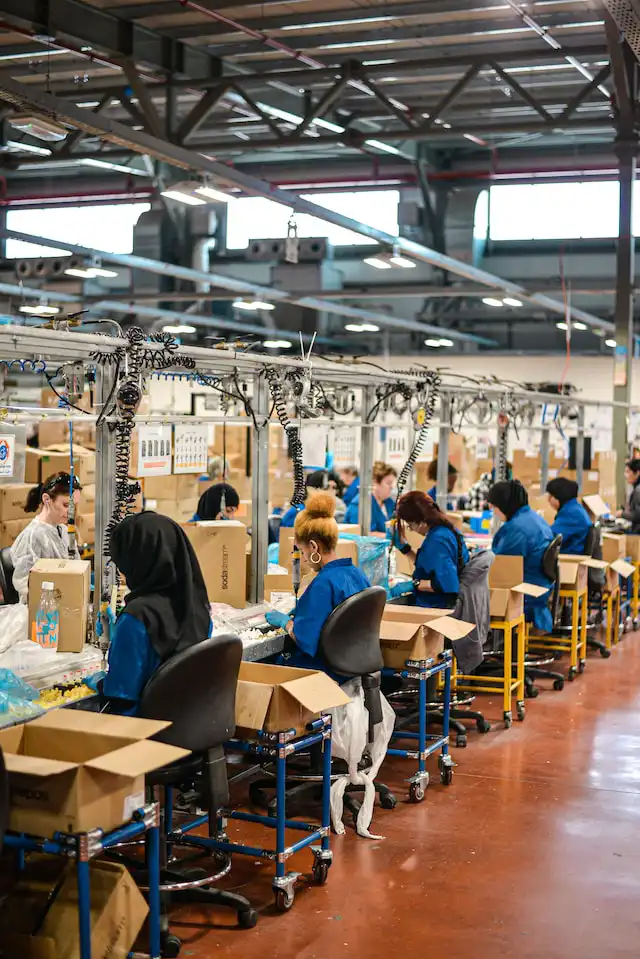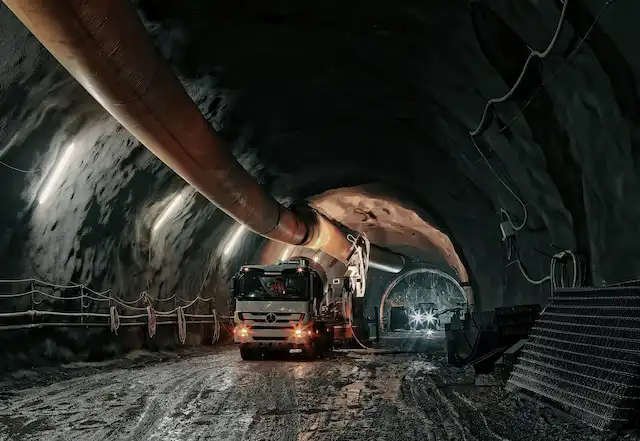
India Logistics Market Outlook to FY24
Driven by Government Infrastructure Push, New Age Logistics Startups, and Technology Innovation
Region:Asia
Author(s):Sridhar, Garima
Product Code:KR977
April 2020
124
About the Report
The report titled “India Logistics Market Outlook to FY24–Driven by Government Infrastructure Push, New Age Logistics Startups, and Technology Innovation” provides a comprehensive analysis of the status of the logistics sector in India. The report covers various aspects including the current logistics scenario in India, its components viz, freight transportation, warehousing, CEP, VAS, and cold chain industries, the issues and challenges, major growth drivers, investment in infrastructure, tech disruptions and innovations, and competitive benchmarking. The report concludes with market projections for the future of the industry including forecasted industry size by revenue.

India Logistics Market Overview and Size:
India has been ranked at 4th position in the world in railway freight traffic after China, the US, and Russia. Under the land freight corridors, 65% of domestic freight volume carried through the road; high compared to ~50% in developed countries. Logistics India has witnessed an average CAGR during FY14-FY19 due to favorable policy reforms from the government, continued investment in infrastructure by both the government and the private sector; the influx of foreign players in the market in recent years, increasing consolidation, and investing in innovative technologies has stimulated the growth in the market.
India Logistics Market Segmentation:
Freight Transportation: India’s transportation market forms the largest chunk of the logistics sector with over 50% share in terms of revenues during FY’2019, due to relatively higher traffic congestion & lack of flexibility in other modes, and comparatively low barriers of entry in road freight. Small fleet owners dominated industry (70% of all fleet) operating at a margin of 8-12% and average transaction days of 12-15 per month. These SFOs primarily operate on Spot bookings while MFOs and LFOs working on LHAs. The slowdown in the economy, especially the core sectors is adversely affecting demand. Excluding November, IIP has fallen during Aug-Dec 2019, (largest fall of 4.6% in Sep) Capital Goods and Consumer Durables’ production declined by 18.2% and 6.7% respectively. In the future, IR and GoI are actively making efforts to make rail freight competitive with road freight. Eastern and Western DFCs are expected to be fully operational by 2020, and 4 more corridors are in the pipeline. IR is also looking to rationalize rail freight rates.
Warehousing: Warehousing Industry in India is home to 200+ organized players and numerous unorganized players. has shown steady growth over the last few years on the back of continued institutional investment, ever-increasing demand, and consolidation in the industry, especially after the passing of the GST Act. It has been estimated that around 90% of overall warehousing space controlled by unorganized sector. Unorganized players offer prices ~50% below the market rates as compared to organized players but offer only storage. More than 20% of warehouse space is concentrated in 8 major cities: Mumbai, NCR, Pune, Hyderabad, Bengaluru, Kolkata, Chennai, Ahmedabad. Industrial Warehouses form the largest share of the warehousing space in the country, with a Grade-A warehouse becoming the new benchmark for quality. Investment has been rising in the sector owing to 100% FDI allowance, higher cap rates around 150-200 bps1 greater as compared to commercial assets and approval and funding risk for greenfield investments
Cold Chain: It has been estimated that about 40% of the food produced in the country (67 million tonnes) valued at ₹92 billion is wasted in 2018 at all levels from harvesting to the end stage of consumption. Of this, 4.6-15.9% of food wastage happens in fruits and vegetables, 5.2% in inland fish, 10.5% in marine fish, 2.7% in meat, and 6.7% in poultry meat. Owing to this, the has shown a robust growth with a CAGR of 10.1% during the period 2014-2019 in terms of revenues. The growth was primarily due to the growing production and storage of frozen products. It has been observed that more than 60% of total cold warehouse capacity only suitable only for storing potato. The cold chain industry is highly fragmented with 3,500+ cold storage and transportation players.
Competitive Landscape of Major Players Operating in the India Logistics Market
Road Transportation Market: The road transport market is extremely fragmented with more than 70% of India’s overall fleet being held by Small Fleet Operators (SFOs), accounting for a majority of the volume of goods transported. Major companies operating in the road freight market include TCI Freight, Agarwal Packers and Movers, Varuna Group, Gati, VRL Logistics, Safexpress, NTC Logistics, KerryIndev Logistics, V Trans, Om Logistics, Sical Logistics, Bluedart, and DTDC. The road transport industry is highly competitive on the basis of price, type of fleet, delivery/transit time, and value-added services.
Warehousing Market: The warehousing industry in India is fragmented with the presence of both organized and unorganized players in the market.. Location and price are the key parameters for the selection of a warehousing partner in the country, with the quality of services increasingly becoming important as the industry undergoes a shift from unorganized to organized players. Major companies include Safexpress, Stellar Value Chain, KerryIndev Logistics, Shree Shubham Logistics, Central Warehousing Corporation, Avvashya CCI, TCI Supply Chain Solutions, Rhenus Logistics, Avanthi Warehousing Services, ATR Warehousing, and North West Carrying Company.
Cold Chain Market: The consists of companies offering cold storage and cold transportation services in the country. Under the cold transport, Organised players are few in number and operate on a pan India basis, using a hub-and-spoke model for operations. Major companies provide cold chain services include Snowman Logistics, Coldman Logistics, Gubba Cold Storage, Gati Kausar, Crystal Group, ColdStar Logistics, and ColdEx.
Co-Packing Market: Major players in the co-packing industry include CLR Services, ORganico Beverages, Gossip Flavored Milk, Jam Jam Group, Packmasters, Jain Packaging and Solutions, Fibro Foods, Usha Foods, Jayanti, and Bharat Vikas Group.
India Logistics Market Future Outlook & Projections
The logistics market in India is expected to experience a medium level of growth owing to improving infrastructure, increasing industrial output, significant consolidation of the market, and booming e-commerce. The is expected to witness the entry of new players and new mergers and acquisitions between the players. Improvement in port infrastructure: Dwell times have reduced in JNPT, the largest container port in the country, as well as all the major ports from 82 hours in 2016-17 to 59 hours in 2018-19 and, are expected to reduce further. Moreover, phase I of the Bharatmala Pariyojana set to be completed by 2021-223, which includes 34,800 km of roads. Focus on road infrastructure and dependence on roads for freight transport is expected to continue. Container trucks proportion in the market is expected.
Key Topics Covered in the Report
- India Logistics and Warehousing Market Introduction
- Logistics Infrastructure
- India Logistics and Warehousing Market Size
- India Logistics and Warehousing Market Segmentation
- India Logistics and Warehousing Market Future Outlook
- India Logistics and Warehousing Market Future Segmentation
- India Freight Transportation Market Size
- India Freight Transportation Market Segmentation
- India Freight Transportation Market Future Outlook
- India Freight Transportation Market Future Segmentation
- India Warehousing Market Size
- India Warehousing Market Segmentation
- India Warehousing Market Future Outlook
- India Warehousing Market Future Segmentation
- India Cold Chain Market Size
- India Cold Chain Market Segmentation
- India Cold Chain Market Future Outlook
- India Cold Chain Market Future Segmentation
- Regulatory Environment
- Issues and Challenges
Products
Key Target Audience
Freight Forwarding Companies
E Commerce Logistics Companies
3PL Companies
Consultancy Companies
Logistics/Warehousing Companies
Real Estate Companies/ Industrial Developers
Time Period Captured in the Report:-
Historical Period – 2014-2019
Forecast Period – 2020-2024F
Companies
Key Segments Covered
Freight Forwarding Market
By Revenue by Mode of Transportation
Road Freight (Volume and Revenue)
Rail Freight (Revenue)
Sea Freight (Revenue)
Air Freight (Revenue)
Warehousing Market
Space by Business Model
Industrial/Retail
CFS/ICD
Cold Storage
Agriculture
Warehousing Space by Region
NCR
Mumbai
Bangalore
Pune
Chennai
Kolkata
Hyderabad
Ahmedabad
Others
Space by End User
3PL
E-Commerce
Retail
Engineering & Manufacturing
Electronics
Others
Cold Chain Market
Revenue By Service
Cold Transportation
Cold Storage
Revenue By Temperature Range
Freezers
Chillers
Ambient
Snapshot on Co-Packing Market in India
Companies Covered
Trucking Companies
TCI
Agarwal Packers and Movers
Varuna Group
Gati
VRL Logistics
Blue Dart
DTDC
Safexpress
NTC Logistics India
Warehousing Companies
KerryIndev Logistics
Stellar Value Chain
Shree Shubham Logistics
Central Warehousing Corporation
Avvashya CCI
Rhenus Logistics
Avanthi Warehousing Services
ATR Warehousing
Cold Chain Companies
Snowman Logistics
Coldman Logistics
ColdStar Logistics
ColdEx
Gubba Cold Storage
Crystal Group
Co Packing Companies
Organico Beverages
Gossip Flavoured Milk
Jam Jam Group
Packmasters
Jain Packaging and Solutions
Fibro Foods
Usha Foods
Jayanti
Bharat Vikas Group
CLR Services
Table of Contents
1. India Overview and Logistics Market
India Overview (GDP Share by Industries, Export and Import Commodities by Volume)
Logistics Infrastructure: Road and Rail Including Major Road and Rail Freight Corridors
Logistics Infrastructure: Major Seaports and Airports Covering Sea Freight Volume, Air Freight Volume and Flow Corridors
India Logistics Market, FY14-FY19 including Market Size on the Basis of Revenues and Segmentation by Freight Forwarding, Warehousing, Value Added Services and CEP
India Logistics Future Market, FY19-FY24 including Market Size on the Basis of Revenues and Segmentation by Freight Forwarding, Warehousing, Value Added Services and CEP
Indian Logistics International Benchmarking with Countries including Germany, US, Australia, China, Vietnam and Philippines
Tax Regime in India: GST on Warehousing Services, Road Transport Services and Tax Liability of Parties
Tax Regime in India: Corporate Tax
2. Indian Freight Transportation Market
How Indian Freight Market is Currently Positioned
Road Freight Leading the Stack in Volume and Revenue on the Basis of Revenues by Segment, Freight Rate in FTK, Market Size on the Basis of Revenues, Volume of Goods, FTK and Average Distance per KM
Challenges: Truncating Margin, Infrastructure, and Halts
Challenges: Driver Shortage, Last Mile Connectivity, Seasonal Variations & Labour Inefficiency
3PLs & Intermediaries Dominate the Road Freight Industry
Indian Road Transportation Industry Ecosystem
Government Norms Creating a New Normal for Road Freight Showcasing GST, Scrappage Policy and Revision in Axle Load Norms
New Axle Load Norms: Impact on Truck Performance and Freight
BS VI Norms: Impact on Auto Industry
Target Market of Container Trucks in India Showcasing Cross comparison among Industries on the basis of major players & revenue share, market size & volume and high growth segments
Cost Component Analysis of Trucking in India Including Margins of SFOs & LFOs, Operating Cost Structure of Transporter
Seasonality Factors Affecting Demand of Road Transportation covering High Demand Seasons, Products of High Demand, Regions of High demand and products
Existing Pain Points for Truckers, and End User Industries
Innovation in Container Truck Industry: Technologies
Innovation in Container Truck Industry: Digital Aggregators Including Online Board and Automated Broking with List of Companies Operating Across State Borders
Cross Comparison of Major Freight Forwarding Companies in India on the basis of Establishment year, employees, location, Industries, Clientele, Technology, Certification, Services, and Fleet Size, truck Type, Revenue, Volume, Strength and Recent Development
India Freight Transportation Future Market Size, FY19-FY24 (F) Including Revenue and Revenue Segmentation by Mode of Transport
COVID-19 Impact on Indian Trucking Industry Showcasing Current Situation Due to Lockdown, Initiatives and Potential Impact on Indian trucking Industry
3. India Warehousing Market
India Warehousing Market, FY14-FY19 Covering Market Size on the Basis of Revenues, Area, Number of Organized Warehouses, Number of Unorganized Warehouses, Average Rentals and Occupancy Rates
Impact of GST on the Warehousing Sector
National and State Logistics and Warehousing Policies
Supply Ecosystem of Warehousing Market in India Including Institutional Investors, Developers, 3PL providers and International Companies
Investments in Warehousing: Concentrated in Existing Hubs on the basis of Type of Investment and Profile of Investors
Existing and Upcoming Warehousing Hubs in the Country Covering Space, Infrastructure, Major Industries, Land Rates, Warehousing Rentals, Major Companies and Remarks
Ahmedabad
Bengaluru
Chennai
Hyderabad
Kolkata
Mumbai
National Capital Region (NCR)
Pune
Segmentation by End Users Including Price and Major Logistics Companies
Target Audience of End Users of Warehousing including Major Industries, Market Size and growth Rate, Leading Companies and High growth Segments
Warehousing Segmentation by Business Model
Organised Industrial Warehouses by Grade A & Grade B on the basis of space and split by major cities
Challenges and Pain Points in the Warehousing Industry
Future Innovations in Indian Warehousing
Digital Aggregators Emerging in Warehousing
Cross Comparison of Major Warehousing Companies in India on the Basis of Establishment, Employees, Industries, Clientele, Technology, Certifications, Number of Warehouses, Warehousing Space, Occupancy Rate, Revenue, Strengths
Future Market Size of India Warehousing Industry, FY19-FY24 (F) Covering Market Size on the Basis of Revenues, Area, Number of Organized Warehouses, Number of Unorganized Warehouses, Average Rentals and Occupancy Rates
Future Segmentation of India Warehousing Industry, FY24 (F)
4. India Cold Chain Industry
Pain Points of End Users
Various Stages in Product Value Chain & Losses Incurred in Each Stage
A Closer Look at the Target Audience Industries on the Basis of Major Players and Market Share on the Basis of Revenues, Market Size, Temperature Required, Need for Cold Chain Solutions
Supply Ecosystem of Cold Warehouses in India Covering Real Estate Developers, Captive Companies and 3PL Companies
Government Initiatives to Promote Cold Chain
India Cold Chain Industry Peer Analysis Including Countries such as India, China, US, Philippines and Australia
India Cold Chain Industry Size, FY14-FY19 on the Basis of Revenues by Cold Transport and Cold Storage, Number of Pallets, Occupancy Rate
Cold Storage Clusters in India
Regional Cluster Analysis on the Basis of Major Products/End Users, Major Companies, Price Variation
India Cold Transportation Industry Size, FY14-FY19 on the Basis of Number of Reefer Trucks, Revenues and Cold Split by Mode of Transport
Challenges Faced by Cold Chain Companies
Investment & Operating Profitability Model of a Cold Warehouse Including Assumptions, Variable Costs, Fixed Costs and Profitability Analysis
Future Technologies in Cold Chain
Cross Comparison of Major Cold Chain Companies in India on the Basis of Establishment, Major Location, Major Products, Clientele, Technology, Certification, Recent Developments, Employee Base, Temperature Range, Number of Warehouses, Number of Pallets, Price, Number of Trucks, Occupancy Rate and USP
India Cold Chain Future Market Size, FY19-FY24 (F)
5. Â India Contract Packing Market
India Co Packing Market Snapshot
6. Appendix
Research Methodology: Market Definitions
Research Methodology: Abbreviations Used
Research Methodology: Market Sizing Approach
Research Methodology: Consolidated Research Approach
Research Methodology: Sample Size Inclusion
Research Methodology: Primary Research Approach
Research Methodology: Research Limitations and Future Conclusions
Specifications of Grade A and Grade B Warehouses
Commercial Power Tariffs across India
Why Buy From Us?

What makes us stand out is that our consultants follows Robust, Refine and Result (RRR) methodology. i.e. Robust for clear definitions, approaches and sanity checking, Refine for differentiating respondents facts and opinions and Result for presenting data with story

We have set a benchmark in the industry by offering our clients with syndicated and customized market research reports featuring coverage of entire market as well as meticulous research and analyst insights.

While we don't replace traditional research, we flip the method upside down. Our dual approach of Top Bottom & Bottom Top ensures quality deliverable by not just verifying company fundamentals but also looking at the sector and macroeconomic factors.

With one step in the future, our research team constantly tries to show you the bigger picture. We help with some of the tough questions you may encounter along the way: How is the industry positioned? Best marketing channel? KPI's of competitors? By aligning every element, we help maximize success.

Our report gives you instant access to the answers and sources that other companies might choose to hide. We elaborate each steps of research methodology we have used and showcase you the sample size to earn your trust.

If you need any support, we are here! We pride ourselves on universe strength, data quality, and quick, friendly, and professional service.















